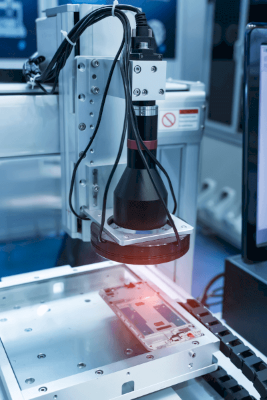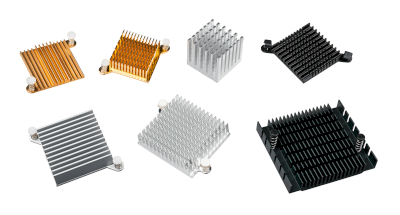What Is a Corner Bracket?
A corner bracket is a component used to safeguard and reinforce the corners of panels.
These brackets are also employed to secure the corners of railings. Corner brackets serve diverse purposes, including mounting, positioning, and reinforcing panels and equipment, protecting corners, preventing stains, and averting injuries and damage caused by collisions with corners.
They are constructed from various materials such as aluminum, stainless steel, and other metals, as well as resin, and are designed with pre-drilled holes for installation based on the required dimensions.
Applications of Corner Brackets
Corner brackets find application in a wide range of scenarios. Some examples include:
1. Electrical and Electronic Equipment Mounting
Corner brackets are used to mount electrical and electronic equipment securely in corners. They are also used for installing security cameras in ceiling corners. Additionally, they serve to protect and reinforce the corners of panels like picture frames and poster frames.
2. Handrail Corner Joints
Corner brackets are commonly employed at the corners of indoor and outdoor handrails to enhance safety. They are also used to secure rubber gaskets attached to the corners of refrigeration equipment, contributing to waterproofing efforts. Moreover, corner brackets play a significant role in the building industry, including applications in doors, windows, fixtures, and construction materials.
In outdoor applications, materials like stainless steel and other corrosion-resistant metals are favored. Some of these brackets are referred to as reinforcement hardware and are used at the corners where braces are affixed. They are also commonly employed in foundations and beams, often playing a role in earthquake protection for buildings.
Principle of Corner Bracket
Corner brackets are versatile components used for various purposes, including protection, reinforcement, mounting, railing safety, restraining fittings, waterproofing, and outdoor line anchorage fittings.
1. General Use
In general applications, corner brackets are installed at the four corners of panels to connect the vertical and horizontal elements, increasing their structural integrity and providing protection. They are also employed to reinforce box-type equipment by attaching them as plates to the equipment’s corners.
Corner brackets are used in room corners to secure shelves, install surveillance cameras, and perform similar tasks. Given the challenges of installing corner brackets, their design often facilitates easy fixation.
For handrail installations, safety is enhanced by using fixing brackets capable of accommodating bends in corner brackets. Brackets that conceal the end of the handrail at the terminus further improve safety.
2. Special Use
Corner brackets serve specialized purposes, such as acting as outdoor wire pull brackets in electrical applications. This is particularly relevant when the height above ground level is insufficient for outdoor wire installation or when obstructions hinder access to pull-in points.
In large refrigerator and freezer doors, corner brackets are positioned at the four corners to suppress rubber gaskets and enhance waterproofing.
Types of Corner Brackets
Aluminum corner brackets can be broadly categorized into the following types: protruded, extruded, and multi-row groove brackets.
1. Protruded Brackets
Protruded brackets feature a protrusion on the mounting surface to prevent rotation. They are typically made from ADC12, an affordable material compared to extruded brackets of similar size. The protrusion acts as a detent during installation, enhancing workability. Various additional function brackets are available, including single-rib brackets, nut-retaining brackets, brackets with protrusions on one side, single-sided long-hole brackets, and brackets with covers, among others.
2. Extruded Brackets
Extruded brackets are manufactured using aluminum extrusion and are composed of A6N01SS-T5 material with an anodized surface. They exhibit an appealing appearance, are dust-resistant, and provide greater strength compared to brackets with protrusions. Various types of extruded brackets are available, each offering additional functions. These include thick brackets, eccentric brackets, unequal brackets, and connection brackets of different sizes.
3. Multi-Row Groove Brackets
Multi-row groove brackets are used in frame structures with multiple rows of grooves. Examples include projecting brackets for 2-row grooves, extruded brackets for 2-row grooves, extruded brackets for 3-row grooves, and extruded brackets for 4-row grooves.


